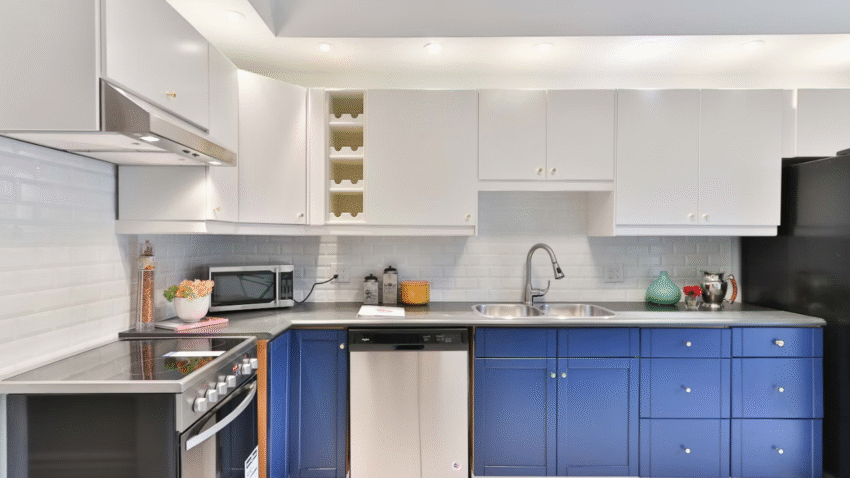Introduction
Choosing a cutting board may seem simple—but the right one can improve your cooking workflow, protect your knives, and help maintain kitchen hygiene. With so many options—wood, plastic, bamboo, glass—it can be confusing to know which board is best for your needs. In this guide, you’ll learn how to choose the right cutting board based on material, use, maintenance, and safety so you can prep your meals like a pro.
Why Choosing the Right Cutting Board Matters in the Kitchen
The cutting board is one of the most used tools in any kitchen. Whether you’re slicing vegetables, carving meat, or prepping raw seafood, your board plays a major role in safety, cleanliness, and even how long your knives last.
Here’s why it’s so important:
- Protects knife blades from dulling prematurely
- Prevents cross-contamination with separate boards for different foods
- Improves prep efficiency with the right size and surface
- Reduces food waste by providing a stable, clean cutting area
A good cutting board helps you prep faster, clean easier, and cook more safely.
Step-by-Step Guide to Choosing the Right Cutting Board
Here’s what to consider when selecting your ideal cutting board:
1. Choose the Right Material
There are several popular cutting board materials—each with its own pros and cons. Let’s break them down:
Wood
- Best for: Vegetables, herbs, cooked meat, bread
- Pros: Gentle on knives, durable, naturally antimicrobial
- Cons: Requires regular oiling, not dishwasher-safe, heavier
Kitchen Tip: End-grain wood boards (like maple or walnut) are the highest quality—they self-heal from cuts and last for years.
Plastic
- Best for: Raw meats, poultry, seafood
- Pros: Dishwasher-safe, affordable, lightweight
- Cons: Can scar easily, may trap bacteria in deep grooves, less durable
Pro Tip: Use color-coded plastic boards to avoid cross-contamination (e.g., red for raw meat, green for vegetables).
Bamboo
- Best for: General chopping and slicing
- Pros: Eco-friendly, lightweight, harder than softwood
- Cons: Tougher on knives, not ideal for long-term heavy use
Note: Bamboo is more water-resistant than wood but still shouldn’t be soaked.
Glass or Marble
- Best for: Rolling dough or serving only
- Pros: Nonporous, easy to clean
- Cons: Extremely harsh on knives, slippery, noisy
Warning: Avoid glass for cutting—it dulls blades quickly and increases the risk of slips.
2. Consider Your Food Prep Habits
Different boards serve different purposes. Ask yourself:
- Do you prep a lot of raw meat? → Get a plastic board that’s dishwasher-safe.
- Do you enjoy baking or slicing bread? → A large wooden board is ideal.
- Need to chop herbs or small produce? → A small bamboo or wood board works well.
- Want one board for everything? → Use a two-board system: one for raw proteins, one for everything else.
Kitchen Tip: Keep multiple boards to rotate and reduce washing during large cooking sessions.
3. Pick the Right Size and Thickness
Cutting boards come in various sizes. The ideal size depends on your counter space and cooking style.
- Small (8×10″): Best for garlic, herbs, or on-the-go chopping
- Medium (10×14″): Everyday use for slicing fruits, veggies, and proteins
- Large (15×20″+): Great for meal prep, carving roasts, or baking prep
- Thickness: ½”–1″ for plastic; 1″–2″ for wood to resist warping
Pro Tip: Choose a board at least as wide as your largest knife to prevent overhang or mess.
4. Look for Safety Features
To avoid injury or slipping during food prep, make sure your board has safety in mind.
- Rubber feet or grips: Prevent movement while chopping
- Juice grooves: Catch liquid from meats or juicy fruits
- Handles or cutouts: Make lifting easier—especially for heavy wood boards
Hack: Place a damp kitchen towel or non-slip mat under any board to secure it instantly.
5. Consider Ease of Cleaning
Proper cleaning is critical to avoid bacteria buildup.
- Wood and bamboo: Hand wash only; dry immediately; oil regularly
- Plastic: Dishwasher-safe, but replace when heavily scratched
- Glass/marble: Easy to wipe clean but not knife-friendly
Reminder: Always sanitize boards after handling raw meat or poultry.
Common Mistakes to Avoid
Avoid these common mistakes when choosing or using a cutting board:
Mistake 1: Using One Board for Everything
Solution: Have at least two—one for raw proteins and one for cooked foods or produce.
Mistake 2: Using Glass Boards for Cutting
Solution: Stick to wood or plastic. Glass looks great but ruins knives quickly.
Mistake 3: Not Replacing Old, Scarred Boards
Solution: Deep grooves trap bacteria. Replace plastic boards when they become heavily worn.
Mistake 4: Ignoring Maintenance for Wood Boards
Solution: Oil wood boards monthly with food-grade mineral oil to prevent cracking.
Mistake 5: Choosing Style Over Function
Solution: Go for safety, size, and knife protection over aesthetics—form should follow function.
Extra Tips & Kitchen Hacks
Make the most of your cutting boards with these bonus tips:
Tip 1: Store Boards Upright
Use a vertical rack or drying stand to keep boards dry and prevent warping.
Tip 2: Use Cutting Boards as Serving Trays
Large wooden boards double as beautiful cheese or charcuterie platters.
Tip 3: Rotate Your Boards
Rotate between two or three boards to reduce wear and allow for full drying between uses.
Next Task: Now that you’ve chosen the perfect cutting board, learn how to sharpen your kitchen knives to keep your prep precise and safe.
Conclusion
Choosing the right cutting board can transform your kitchen workflow—from faster prep to safer slicing. By considering material, size, safety features, and how you’ll use it, you can select a board (or two) that suits your needs and protects your tools. Remember to care for your board properly and replace it when needed. A reliable cutting board is one of the smartest investments a home cook can make.
Bookmark this guide so you never have to second-guess your cutting board choice again!
